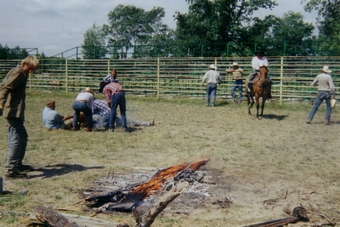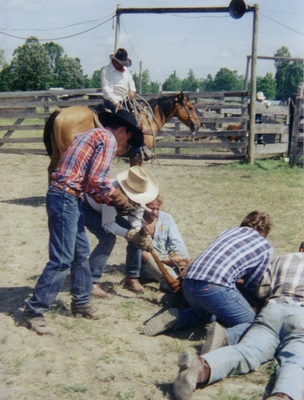I hope these responses will help a bit with your daughter's report. (If you have time, you'll find other little bits and pieces scattered throughout my website.)
1. Job description:
The cowhand's job description was, essentially, "whatever it takes to help the ranch make a profit." That could mean playing nursemaid to a newborn calf, training an untrained horse, mending a fence, taking a herd to market, chopping firewood, thwarting thieves, eradicating predators, grubbing out poisonous range plants, branding cattle, bringing a wagonload of supplies from town, cleaning out water holes, putting up hay, harvesting oats, patching a leak in the bunkhouse roof, or anything else the boss needed to have done.
2. Salary (I found this on your site.)
A working cowhand in the late 1800s was paid $25 to $30 a month "and found." The phrase "and found" meant he also got his meals (and a bunk when he was at the ranch headquarters.) A top hand might even get $40 a month and a foreman $50 or more. On a drive, a trail boss was sometimes paid as much as $100. For comparison, back then a typical school teacher's wage was $30 a month, and dinner in a restaurant would usually cost about 25 cents.
3. Benefits:
If you're thinking of medical and dental, forget it. In the 1880s, about the only benefit a worker in any industry got was a paycheck. And at a time when the average life expectancy for men was age 34, retirement plans weren't even considered.
If a good hand were injured, the ranch might fetch the sawbones from town, but in most cases the cowboy got whatever care the others on the ranch could provide. Fortunately, in the late 1800s there was a high likelihood that one of your riding partners had some experience with frontier doctoring -- if he had been in the army he may have even helped hold down a wounded buddy while a field surgeon sawed off an arm or leg.
As for security, if he stood up for the brand, the rest of the ranch would stand up for him -- even at the risk of their own lives. It has been said that if, at the end of your life, you have had one true friend, you were a success. By that measure, most cowhands could be counted as very successful.
The main benefit that lured a ranch hand to the job was a lifestyle he loved -- spending most of his time in the beauty of the great outdoors, working with some incredible critters, and the pride that came from doing a real man's job. And, truth to tell, most of them were probably adrenaline junkies who lived for the excitement that was often part of a cowboy's life.
4. Some picture of them doing what ever it is they do.
The best source of authentic photos is the Library of Congress "American Memory" website -- http://memory.loc.gov/ammem/browse. It may take a little experimenting to figure out what collections work best for you, but they have lots of early pictures. There's a small sample for you at the right. (For the sake of reality, I've included two pictures of actual branding in progress, taken by yours truly at the North Star Ranch, Effie, Minnesota.)
(All black and white photos by Solomon Devore Butcher, 1856-1927, and courtesy of the Library of Congress.)
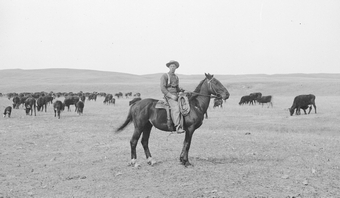
Cowboy and a herd of cattle in Cherry County, Nebraska, in 1889.
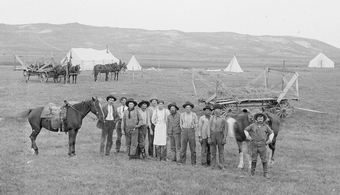
Cowboy camp in Cherry County, Nebraska. ca. 1900
Note hay wagons and what appear to be a couple of hand scythes lying in the grass between the right-hand horse and hay wagon.
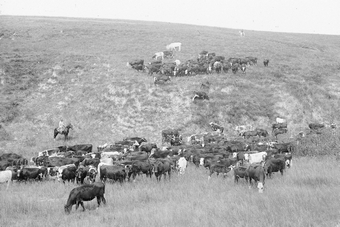
Herding cattle near Amherst, Buffalo County, Nebraska. ca. 1905
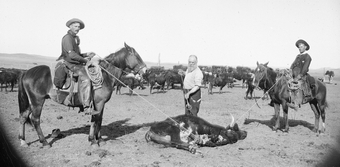
Ephriam Swain Finch branding cattle on the Milldale Ranch near Arnold, Custer County, Nebraska. ca. 1900
(I suspect this was staged for the camera. Notice that there's no fire nearby, he's holding a "hot" branding iron without gloves, and cattle are normally branded on the rump or shoulder -- not on the belly, where it would ruin the value of the cowhide!)
